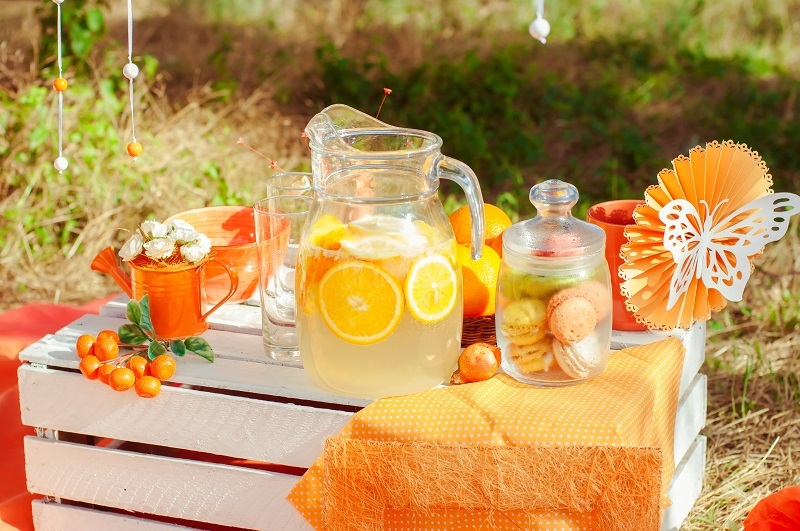Ensure Your Poinsettias Flourish Beyond the Holidays
Posted on 30/08/2025
Ensure Your Poinsettias Flourish Beyond the Holidays
Poinsettias (Euphorbia pulcherrima) brighten up homes worldwide every holiday season, their vibrant red, pink, white, or marbled bracts bringing festive cheer. But what happens once the decorations come down? With the right care and attention, your poinsettias can thrive well beyond December--turning into lush, attractive houseplants that can even bloom year after year. This comprehensive guide will walk you through everything you need to know to ensure your poinsettia's ongoing health and vitality long after the holidays have ended.
Understanding Poinsettias: Not Just Christmas Plants
Poinsettias are native to Mexico, where they grow as perennial shrubs reaching heights of up to 10 feet! Unlike the short-lived misconception of being "disposable" holiday plants, poinsettias can flourish for years if cared for properly. Their showy colors are not actually flowers, but modified leaves called bracts; the true flowers are the tiny yellow structures at the center. With knowledge and patience, you can ensure your poinsettia's life extends well past the festive season.
Popular Poinsettia Variations
- Classic Red Poinsettias
- White and Cream Bracts
- Blush and Pink Shades
- Marbled or Speckled Cultivars
- Miniature and Large Varieties

The Essential Elements to Help Your Poinsettias Thrive All Year
To keep your poinsettia thriving post-holiday, provide it with the right care, environment, and attention. Here are the core aspects:
1. Light: Mimic Their Natural Habitat
After the holidays, ensure your poinsettia receives plenty of bright, indirect sunlight. Ideally, place it near an east, west, or south-facing window with filtered light. Genuine darkness at night is important during certain periods for reblooming, but year-round, adequate light prevents leggy growth and faded bracts.
- Rotate the pot weekly to ensure even growth.
- Avoid direct sun, which may scorch leaves and bracts.
- If natural light is limited, consider a grow light.
2. Water: Moist but Not Soggy
Excessive moisture is a frequent killer of poinsettias after Christmas. Always check the top inch of soil--water only when it feels dry, and always let excess water drain away. Never let your plant sit in a saucer of water to prevent root rot.
- Use room-temperature water.
- Water until it starts to drain, then empty the saucer.
- Reduce watering frequency in winter when growth slows.
3. Temperature and Humidity: Keep It Cozy
Poinsettias prefer temperatures between 60?F and 70?F (15-21?C). Avoid exposure to cold drafts, sudden temperature changes, or heat vents; all of these may cause leaf drop. They also thrive with moderate to high humidity--a challenge during dry winter months.
- Keep away from doors, radiators, and fireplaces.
- Mist leaves occasionally, or set the pot on a pebble tray with water.
- A humidifier can help prevent dryness and leaf edges turning brown.
4. Feeding: Support Active Growth
Your poinsettia's nutritional needs change throughout the year. After blooming, fertilize with a balanced, water-soluble houseplant fertilizer every month during the growing season (spring to late summer).
- Do not fertilize while the plant is in full bloom over the holidays.
- Resume feeding after blooms fade, using diluted fertilizer until active growth appears.
- Reduce or stop fertilizing by fall as blooming approaches.
Pruning and Repotting for Vigorous Growth
Good pruning and occasional repotting are key to keeping your poinsettia healthy and good-looking:
Post-Holiday Pruning
- When colorful bracts fade (usually late winter), cut the plant back to 4-6 inches tall. Leave a few leaves on each stem to stimulate new growth.
- Use sharp, clean pruners--gloves are recommended as poinsettia sap may irritate sensitive skin.
Pinching for Bushiness
- As new shoots appear, pinch off the growing tips every 4-6 weeks until late August. This encourages a bushy, compact shape, rather than one tall, spindly stem.
Repotting: Give Room for Roots
- After pruning (typically in spring), inspect the roots. If cramped, repot into a slightly larger container with fresh, well-draining potting mix.
- Ensure good drainage and never use garden soil indoors, as this may introduce pests or drain poorly.
How to Get Poinsettias to Rebloom Next Holiday Season
One of the most rewarding challenges is getting your poinsettia to display vibrant bracts again in time for the next holiday. This requires simulating the natural short-day cycle that triggers blooming in its native environment.
The Short-Day/Long-Night Process
- Starting in late September, move the plant to complete darkness for 14-16 hours each night. This is essential for bract color development.
- Place the poinsettia in a closet, under a box, or cover with a thick, opaque bag from 5pm until 8am.
- Each day, return your poinsettia to bright, indirect light for 8-10 hours.
- Continue this regimen until bracts begin to color (usually mid-to-late November).
- One accidental light exposure at night can set the process back!
Tips for Reblooming Success:
- Consistent timing and diligence are key--set reminders so you don't miss a day!
- Once color develops, you can display your rebloomed poinsettia wherever you like.
Troubleshooting Common Poinsettia Problems
Even the most attentive owners may face some challenges. Here's how to address issues so your poinsettia flourishes after Christmas:
Leaf Drop
- Usually caused by cold drafts, sudden temperature changes, or overwatering.
- Move to a stable, warm location and check watering routine.
Faded or Yellowing Leaves
- Lack of light or nutrition--move to a brighter spot and fertilize as described above.
- Avoid direct sun, which can also cause bleaching.
Pests (Whiteflies, Spider Mites, Aphids)
- Check leaves regularly, especially the undersides.
- Remove pests with a gentle spray of water, or use insecticidal soap as needed.
- Quarantine new plants to prevent infestations.
Bonus: Summer Care and Outdoor Acclimatization
If you want truly lush, robust growth, let your poinsettia enjoy some time outdoors during the warm months--after all, that's its natural condition! Wait until all danger of frost has passed and nighttime temperatures remain above 55?F (13?C):
- Slowly acclimate your plant by placing it in dappled shade for a week, then gradually increasing morning sun exposure.
- Keep it out of afternoon sun, which is too intense.
- Maintain consistent watering and look for new growth.
- Bring back inside before temperatures drop or before beginning the short-day treatment.

Frequently Asked Questions: Poinsettia Care Year-Round
-
Are poinsettias poisonous to pets?
Poinsettias are mildly toxic but not deadly to cats, dogs, or humans. Ingestion may cause stomach upset and irritation. Keep out of reach of curious pets and children. -
Can I propagate my poinsettia?
Yes! Take stem cuttings in spring and root them in moist, sterile potting mix. Cover with a plastic bag to maintain humidity until rooted. -
Why does my poinsettia look leggy?
Insufficient light or lack of pruning causes stems to stretch. Move to a brighter spot and routinely pinch back new growth for a fuller look. -
My poinsettia didn't change color. What happened?
The most common reason is extra light at night during the critical short-day period--even a quick flash can disrupt bract coloration.
Embrace the Year-Round Beauty of Poinsettias
Poinsettias are far more than just decorative Christmas plants--they are vibrant, living reminders that the holiday spirit can thrive all year. By following these expert pointers, your poinsettia will flourish long after the holidays. Whether you keep it as an evergreen houseplant or successfully coax it to rebloom for many Decembers to come, you'll enjoy the lasting beauty that only a healthy, well-tended poinsettia plant can bring.
Don't toss your poinsettia once the holidays fade away! Keep it thriving with attentive care, and you'll be rewarded with dazzling color and lush growth season after season. Your poinsettia's journey is just beginning--let it flourish long beyond the holidays.
Latest Posts
Hosting Events at [LOCAL LANDMARK]: The Best Flowers to Choose
Top Parks and Gardens in [AREA] to Inspire Your Floral Arrangements
Ensure Your Poinsettias Flourish Beyond the Holidays






